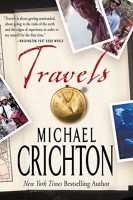 Title: Travels
Title: Travels
Author(s): Michael Crichton
Release year: 1988
Publisher: Knopf
Why in Database: A collection of various texts by Michael Crichton, in which we found some turtle fragments.
The first mentions are in the Pyramid of the Magicians chapter where the Author explores Uxmal. He twice mentions a building there known as “House of Turtles”:
To the west, the great tiered House of the Governor, which has been called the single most magnificent building ever erected in the Americas. Near it, the House of the Turtles and the House of the Pigeons.
The House of the Turtles is named for a row of turtles on its façade. The House of the Pigeons is so named because its roof suggests a dovecote. But no one knows what those buildings were really called, or what went on in them. No one has any idea at all.
The next turtle fragment is much longer, because it is the entire six-page chapter devoted to the turtle that Michael met in Singapore. The chapter itself is titled An Extinct Turtle. Here are extensive quotes:
But charming guesthouses on the east coast are not easily telexed at short notice, and I had come here in the spring of 1982 for a particular reason—to see the seasonal egg-laying of the giant Malaysian leatherback turtles.
For several months beginning in May, the turtles emerge from the ocean to lay their eggs on the isolated beaches of the east coast. In fact, so remote are the beaches that the turtles were
coast. In fact, so remote are the beaches that the turtles were presumed extinct until the 1950s, when they were observed still laying their eggs.
A negative person, I thought, and uninformed as well. The hotel should think twice about having such a person behind the reception desk. After all, the turtles must be a great attraction in this region; a hotel person would logically be expected to know about them.
But in subsequent days I became discouraged. Nobody seemed to know about the turtles. They knew about the windsurfers. They knew about the jungle tours. They knew about the native dance excursions. But no one knew about the turtles.
“You have seen them?”
“No, never.”
“You have not seen the one?”
“Where?”
“Close. By the tree.” He pointed.
There were trees at the edge of the beach, casting shadows in the moonlight. Beneath one I saw a shape in the sand. I went over and clicked on my flashlight.
The turtle was enormous, the size of a desk. She was facing the ocean. With her flippers she had dug a pit of sand perhaps three feet deep. Now she was laying her translucent, slippery, soft eggs in the pit. Her magnificent head moved slowly back and forth. A tear came to her eyes.
The turtle must have weighed three hundred pounds, perhaps more. To crawl a hundred yards up the beach, dig a pit with her clumsy flippers, and lay her eggs had required an enormous effort. She had an exhausted, dazed look on her face. There were more tears, but these were apparently excretions from the eyes and not true tears.
There was a commotion to one side. A dozen people, Chinese and Malays, came up the beach. They had heard about the turtle. They brought powerful lights, which they shone on the animal. I began to feel uncomfortable. There were now a lot of people standing around this turtle while she laid her eggs.
The others began to fire flashbulbs, taking pictures of the turtle. They got very close to her face and fired flash after flash. Finally the father of the Chinese family said something to his son, and the boy climbed on the turtle’s back while his father flashed another picture. Pretty soon his whole family was posed astride the turtle, as she moved her hind flippers ineffectually.
Finally she managed to flick sand into the face of one of the young children standing nearby. The child began to cry in the
darkness. The Malays yelled at the turtle and cursed it. The Chinese took more flash pictures in rapid succession. One of the Chinese men posed near the turtle’s head, holding a bottle of beer to the turtle, as if to offer it a drink. Flash. Laughter.
The boy on the motor scooter zoomed up, parked his bike. The other people fell silent. I wondered if he was an official of some sort, but when he stepped into the light I saw he was only ten or eleven. He spoke quietly, apparently telling them about the turtle. From his gestures, it seemed he was explaining what the turtle was doing. He pointed out her tracks, all the way up the beach. How she had laboriously turned around to face back to the ocean. How long she had worked to dig her pit. How much effort it was costing her to lay her eggs. And, after she laid her eggs, how many hours she would lie here, exhausted, trying to find the strength to struggle back toward the water, to return to the surf by daybreak.
They listened in silence. The young Chinese boy got off the turtle’s back. The child stopped crying, and was encouraged to touch the turtle’s shell, to make peace with the great creature. The entire atmosphere became more respectful. They stepped back from the pit. I thought, They only needed to understand what was happening to this creature. They could not imagine without being told, but once they were told, they became sympathetic and understanding.
He pointed to the departing people. “They go now. They see the turtle and they go.”
“What did you tell them?” I asked.
“They say, want to buy eggs,” he said. “I tell them where to buy eggs, they leave now.”
“They will go and buy eggs?”
“No.”
“Why?”
“I tell them about the turtle, about the eggs. They listen.”
“Ah.”
“And I tell them the cost for eggs. The woman say too much. I think they will not buy.”
“No?”
He shook his head. “No.”
The turtle remained in the pit, moving a flipper occasionally. After an hour, another group of people arrived. There were more flashbulbs, more poses. I went home.
The last mention of the turtle is in the chapter Cactus Teachings), we are citing a piece large enough to make the context of this fragment clear:
Next Brugh introduced the I Ching, a Chinese method of divination in which you toss three coins six times, do a calculation, then look up the answer in a text.
The procedure seemed mathematical and needlessly complicated. And when you got to the text, it was often not helpful: “Someone does indeed increase him; even ten tortoises cannot oppose.” Or “The well must be repaired before drawing water.” It was hard to make sense of that!
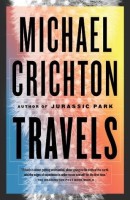
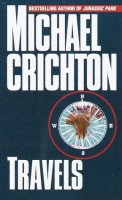
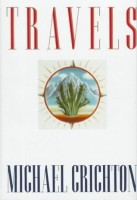
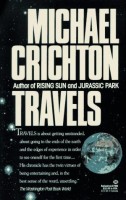
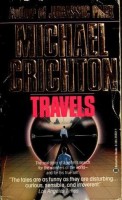
Author: XYuriTT
